Pickleball Fault – Knowing the rules, Winning the game
Pickleball has swiftly grown from a backyard novelty to a popular sport enjoyed by players of all ages and skill levels. As thrilling as the game can be, it’s essential to recognize the rules surrounding faults those tricky moments when a player’s actions unintentionally infringe on the game’s regulations. Understanding pickleball faults not only influences your performance but also helps to foster fair play and sportsmanship among participants. In this comprehensive guide, we’ll delve deeply into the intricate world of pickleball faults, ensuring you have a solid grasp of what constitutes a fault, how it impacts gameplay, and the various types of faults that players commonly encounter. By the end, you will be better equipped to avoid these pitfalls and enhance your overall gameplay experience. So, grab your paddle and join us as we explore this vital aspect of pickleball in detail.
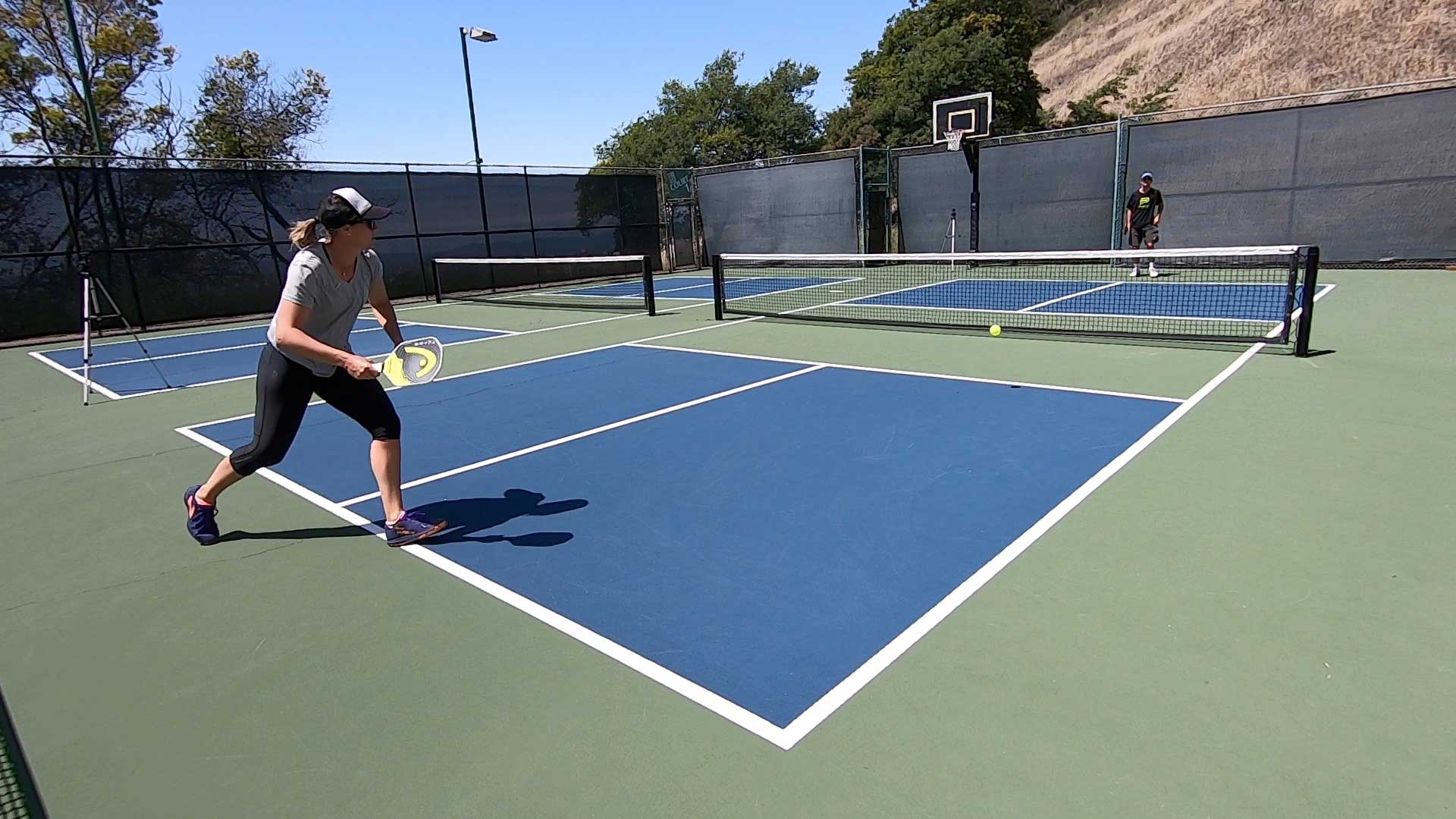
Understanding Pickleball Faults
In any sport, the rules establish a framework within which players must operate, and pickleball is no different. A “fault” represents a violation of these rules that halts play and typically results in the loss of a point or a change of serve. Familiarity with the various kinds of faults and their implications is crucial for any player striving to improve their performance on the court.
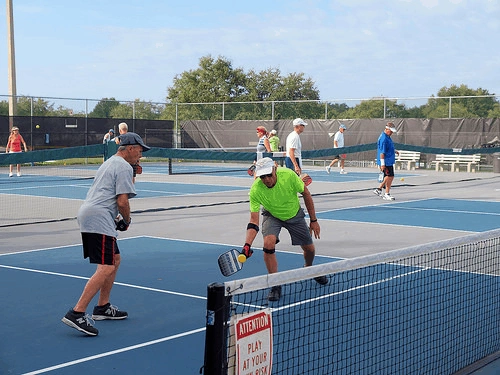
Understanding faults also means acknowledging that they can arise from diverse situations whether it’s a misstep during service, an error while volleying, or a violation in the non-volley zone, commonly known as the “kitchen.” When players are aware of the rules governing these faults, they can minimize errors, leading to a more seamless and enjoyable gameplay experience. As we explore the concept of faults in pickleball more deeply, we will see why they are not just minor infractions but central elements that can significantly shift the game’s dynamics.
Definition of a Fault in Pickleball
In pickleball, a fault is defined as any breach of the rules that results in stopping play. This disruption might arise from technical errors such as the server stepping on the baseline while serving, a player failing to observe the non-volley zone, or mistakenly hitting the ball out of bounds. Essentially, the game’s integrity relies on faults being identified and acknowledged.
When a fault is called, it almost always leads to a loss of point or the turn of service. It’s like a synchronized dance; when one partner misses a step, the entire performance can be thrown off balance. The importance of comprehending what constitutes a fault becomes apparent when considering how these violations can alter the course of a match. Instead of merely being corrections called by referees or opponents, faults embody pivotal moments in the game, dictating pace and influence.
Let’s explore a couple of examples to illustrate this. Imagine a close match between two competitors. Player A is on the brink of scoring a critical point, but they serve out of bounds this fault leads to player B receiving the point. This incident not only affects the current game’s score but may psychologically impact player A for the remainder of the match. Understanding faults highlights the ripple effects that rule violations can have in the fast-paced, high-stakes environment of pickleball.
Importance of Knowing Faults
Knowing the various types of faults is vital for several reasons. First and foremost, it can help players avoid mistakes that could cost them valuable points. Just like a runner must understand the course before a race, a pickleball player should grasp the rules to navigate effectively through the game. When players know what to watch for whether it’s foot faults, non-volley zone violations, or service errors they can adjust their gameplay accordingly and maintain their competitive edge.
Moreover, recognizing faults fosters a spirit of sportsmanship and fairness. By holding themselves and their opponents accountable for following the rules, players contribute to a healthy gameplay atmosphere. For example, if a player acknowledges a fault during a friendly match, it preserves the integrity of the game and creates a more honest environment. It can be challenging to call a fault on yourself, but doing so often earns respect from others, leading to a more enjoyable experience for everyone involved.
Lastly, understanding faults contributes to a more strategic gameplay approach. Players can develop tactics to exploit their opponents’ weaknesses or avoid setting themselves up for tricky situations. In other words, knowledge of faults can be as powerful as the most skilled shot in a player’s arsenal. Just as a chess player anticipates their opponent’s moves, a well-informed pickleball player anticipates faults and reacts accordingly, often tilting the match in their favor.
Common Faults Encountered in Play
Among the myriad rules in pickleball, several specific faults occur frequently during play. Players must learn to recognize these common pitfalls, which include:
- Service Faults: A significant number of faults arise during the serving phase. Missteps such as serving out of bounds or failing to bounce the ball on a return can lead to loss of points.
- Non-Volley Zone Faults: Violating the rules of the non-volley zone, specifically by volleying the ball while standing in the zone, is prevalent and results in immediate fault calls.
- Out-of-Bounds Faults: Hitting the ball outside of the designated boundaries of the court is a classic mistake that even seasoned players may experience from time to time.
- Double Hit Faults: When a player unintentionally hits the ball twice before it crosses the net, they incur a fault.
- Foot Faults: Stepping onto or over the baseline during service can lead to a foot fault. This infraction is often overlooked, yet it can be pivotal in determining the outcome of a serve.
Knowing these common faults enables players to stay vigilant and make informed decisions on the court. Just as a well-prepared chef anticipates the needs of a recipe, players must anticipate the rules and manage the risks of faults to improve their gameplay. Embracing the learning journey in understanding these common errors will ultimately lead to better performance and increased enjoyment of the game.
Types of Pickleball Faults
The world of pickleball faults can be categorized into specific types, each carrying its own set of rules and implications. Familiarizing oneself with these various fault types is paramount to developing a robust understanding of the game.
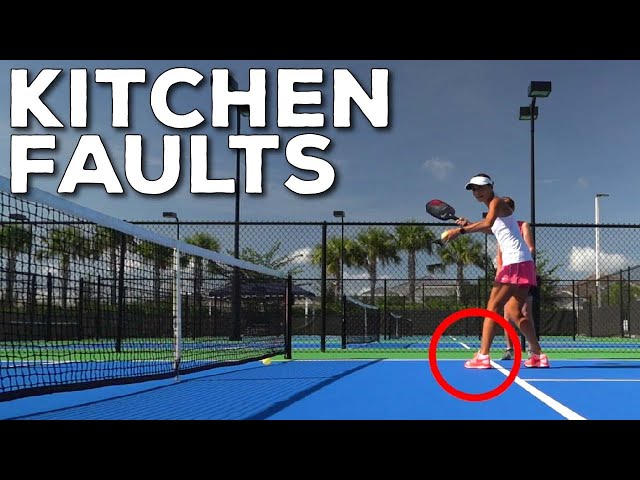
Service Faults
Service faults are among the most common infractions in pickleball. They can range from simple mistakes, like serving out of bounds to more technical violations. Here are key examples of service faults that every player should know:
- Serving Out of Bounds: This occurs when a player serves the ball outside the designated service court. Imagine taking a shot in basketball but missing the hoop entirely; this fault can instantly change the momentum of a match.
- Improper Serving Technique: Players must use an underhand motion, keeping the paddle head below the wrist and below the waist at contact. Failing to use proper technique can lead to a service fault.
- Incorrect Starting Position: In singles play, a player must serve from the correct side of the court based on their score. In doubles, the server must begin from the right side when the score is even, creating confusion if misapplied.
Understanding these elements is crucial because they set the tone for the game right from the start. A strong and accurate serve can create an advantage that extends throughout a match; conversely, faults during service can immediately place players on the back foot.
Non-Volley Zone Faults
The non-volley zone, often playfully called the “kitchen,” adds unique strategy elements to the game. Faults in this area can lead to immediate shifts in momentum. Below are key infractions to be aware of:
- Volleys Made from the NVZ: A player is not permitted to hit the ball before it bounces while standing in the non-volley zone. This rule protects the integrity of rallies, forcing players to maintain court positioning.
- Momentum Carrying into the NVZ: If a player volleys and their momentum causes them to step into the non-volley zone afterward, it will be considered a fault, regardless of the ball’s status.
- Player Contact with the NVZ: Contact with any part of the player’s body or gear in the non-volley zone during play is also a fault.
Being aware of these non-volley zone rules not only aids in preventing faults but also facilitates a more strategic approach in the game. Proper positioning has the potential to turn rallies into scoring opportunities, similar to navigating a chessboard and avoiding traps.
General Play Faults
General play also features specific faults that often occur in the flow of the game. Here are several key categories:
- Double Hits: Hitting the ball twice before it crosses the net is a straightforward but common fault. Picture an artist attempting to paint a seamless picture any unintended dabs can disrupt the fluidity of the composition.
- Ball Bouncing Twice: If a player allows the ball to bounce twice on their side before returning it, they incur a fault. This scenario often stems from poor anticipation during play.
- Hitting the Ball into the Net: A player must clear the net for their return to be valid. If it doesn’t make it over, that’s a fault.
- Hitting Out of Bounds: Any return that lands outside the court’s boundary results in a fault and is one of the most commonly encountered infractions during matches.
The nature of general play faults makes them particularly crucial for players to monitor and adjust. Just as a stone dropped in water creates ripples, careless actions during a rally can cascade into lost points or opportunities.
Net Faults
Net faults are a slightly different category that primarily revolves around the net itself. They include:
- Contact with the Net: A player may not touch the net with their body or paddle while the ball is in play. This is akin to crossing an invisible barrier; once touched, play stops immediately.
- Hitting the Ball Below or Between the Net: Striking the ball before it crosses the plane of the net denotes a fault; players must remain aware of their positioning relative to this central divider.
- Player Crossing the Imaginary Line: Though players are allowed to step around the net post to hit the ball, doing so without legally hitting the ball first constitutes a fault.
A solid understanding of net faults emphasizes focus and precision. In any moment of play, players must always be conscious of their movements and positioning.
Gear and Player Position Faults
Lastly, gear and player position flaws can impact gameplay significantly. Important notes include:
- Contact with Gear: If clothing or equipment touches the net or the opponent’s court while the ball is in play, it’s a fault.
- Improper Serving Area: Incorrect positioning during the service can lead to unnecessary faults, similar to players being offside in soccer. Each area on the court has specific roles that cannot be bypassed.
- Violating Positioning Rules: Any deviations from standard positioning rules set by pickleball can lead to faults and should be carefully monitored.
These nuanced rules might seem technical, but they add depth to strategic gameplay. Just as a musician must stay in tune with their instrument, a player must remain aware of their position and gear to avoid fouls.
Common Service Faults
The realm of service faults deserves further exploration due to their common nature and fundamental importance in gameplay. A strong or well-placed serve can create a tremendous advantage, while common service faults can drastically alter match outcomes.
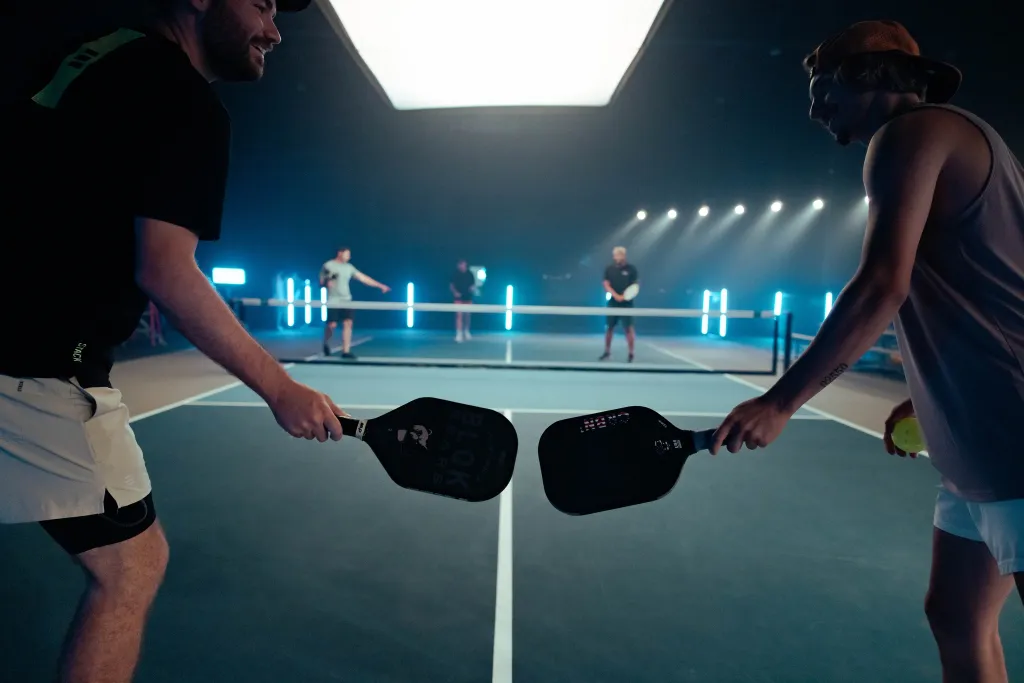
Incorrect Starting Position
Starting from the wrong position is one of the most manageable service faults to avoid. In singles, one must serve from the correct side based on their score, while doubles serve from the right-hand side when the score is even. Failing to observe these rules is akin to starting a race with the wrong footing, essentially putting you in the back row even before the race begins.
Additionally, understanding these rules plays an essential role in strategizing serves. By consciously practicing to ensure proper placement, players can not only minimize faults but also boost their confidence.
Failure to Bounce Before Return
Another critical fault that arises during service is failing to allow the serve or return to bounce on the opponent’s side before hitting it. This double-bounce rule is designed to ensure a fair return. It emphasizes patience and timing, as players must allow the ball to hit once before transitioning into their return. This mechanic serves as the backbone of effective gameplay and rally continuation.
For players, this rule can be compared to a dance where timing is everything if you leap too soon, you risk stepping on toes.
Serving Out of Bounds
A frequent service fault occurs when a player delivers a serve that doesn’t land within the designated service court. Much like setting up a perfectly aimed shot only to miss the basket, this error can be both frustrating and costly. Players must maintain focus on their target area and utilize good technique to ensure that their service is effective and executed properly.
It’s essential to remember that hitting the ball out of bounds results in immediate service loss, directly impacting the flow of the game.
Foot Fault Violations
Foot faults occur when a player’s foot encroaches on the baseline or edge of the court during the serve. The moment a player steps on or over the line, the server loses the point. Imagine a runner getting disqualified for leaving the starting block too quickly; it offers a sense of a missed opportunity and frustration.
Regular practice and mindfulness during serving can help players develop proper foot placement, thus reducing foot faults and ensuring a smooth transition into play.
Illegal Serves
A serve can also be deemed illegal if it does not follow the proper technique the paddle must make contact with the ball below the waist, using an underhand motion. Serving overhand can be tempting for some players familiar with other racket sports, but it is crucial to respect the specific serving rules of pickleball to avoid penalties.
Mastering the appropriate serving technique is akin to an artist refining their craft; consistent practice facilitates skill development, allowing for a more reliable serving strategy.
Non-Volley Zone (Kitchen) Faults
Understanding non-volley zone faults is critical because they play a crucial role in shaping the game’s rhythm and strategy. The kitchen, or non-volley zone, is designed to promote longer rallies and prevent “smashing” close to the net.
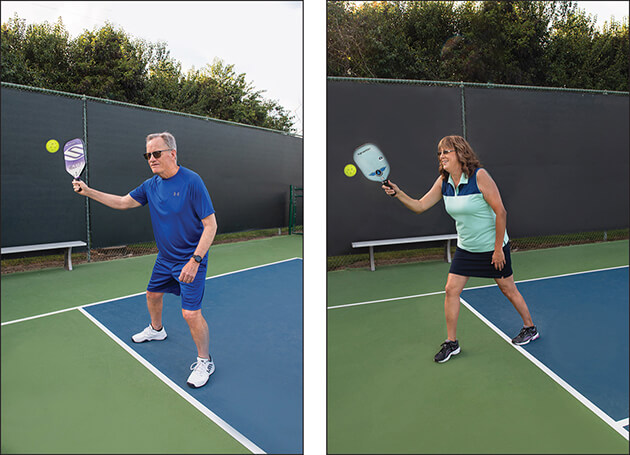
Volleys Made from the NVZ
One of the primary faults in this area occurs when players hit a volley (catching the ball out of the air before it bounces) while standing in the non-volley zone. This rule encourages strategic positioning if a player is too eager and steps into the kitchen to make a quick hit, they risk incurring a fault that halts play.
The psychology of anticipating a ball can be likened to a tightrope walker balancing above a ravine: one misstep can lead to a fall. Thus, players must be mindful of their positioning to optimize their chances at a successful rally.
Momentum Carrying into the NVZ
Another rule violation kicks in when a player, after successfully volleying, inadvertently steps into the kitchen due to their momentum. This often overlooked rule can unexpectedly shift play, leading to faults that derailed potential points. Players should focus on balance and body control to ensure they strategically manage their movements, akin to an acrobat executing a perfect landing after a flip.
Violations of NVZ Rules
General violations of non-volley zone rules can apply as well. Players need to always know where the kitchen is in relation to their position. The simplest errors, such as catching or hitting the ball while standing in the NVZ, can lead to immediate faults.
This mindset encourages players to be aware of their surroundings as they move about the court, just as dancers must remain aware of their fellow performers during a routine.
Player Contact with NVZ
Contact with any part of the player’s body or equipment in the non-volley zone during play is another violation that can result in a fault. There’s no room for negligence here; every movement should be calculated, ensuring distinction between safe and unsafe positioning.
Mistakes During an NVZ Volley
Lastly, mistakes made while executing a volley from the NVZ can result in faults. Players must always be prepared and conscious, ensuring that they don’t accidentally touchdown in the kitchen after hitting a volley much like ensuring a gymnast dismounts safely without stepping over the line.
General Play Faults
General play also introduces a variety of faults that occur during the flow of the game. Understanding these common faults will equip players to enhance their game strategy and reduce mishaps.
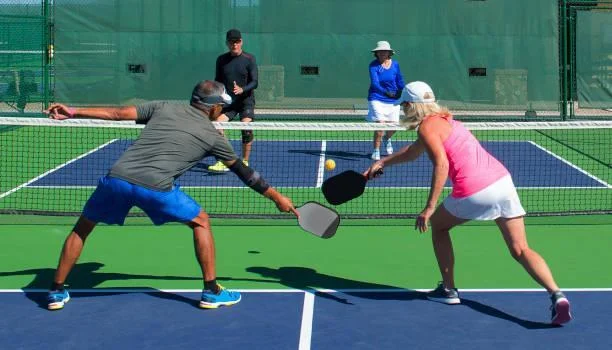
Double Hits
As previously mentioned, a double hit occurs when the ball is hit twice by the same player or team on their side. Even if it’s an unintentional act, the player’s intention is irrelevant the style of play must adhere to the rules, akin to a tightrope walker needing to maintain their balance.
To minimize the chances of this fault during the game, players should focus on their stroke technique ensuring they carry through with a complete, fluid motion during shots. This approach emulates fluidity in dance, reducing the likelihood of clumsiness that might lead to a double hit.
Ball Bouncing Twice
Another prevalent fault arises from a player allowing the ball to bounce twice before returning it. In pickleball, each team must allow the ball to bounce once on their side before returning it a rule known as the double bounce rule. Should a player fail to obey this rule, they will face a fault, similar to a player in a game of volleyball allowing the ball to fall without responding to it.
Recognizing the rhythm of the ball and staying engaged throughout the match can greatly prevent this error, allowing players to respond appropriately to the ball’s trajectory and bounce.
Hitting the Ball into the Net
One of the most visible mistakes that can occur during play happens when a player strikes the ball, but it fails to clear the net. This fault is glaringly apparent and is often met with frustration, like a golfer missing an easy putt right before the hole.
Developing precision and technique in striking and consistent practice will mitigate this issue, encouraging players to spend time honing their skills before facing opponents in practice matches.
Hitting Out of Bounds
Hitting the ball out of bounds is perhaps one of the most common pitfalls during rally play. If the ball lands outside the designated boundaries, the team responsible for that hit incurs a fault. Just like a baseball player tagging a base incorrectly, misjudging the court’s limits can lead to unnecessary fouls.
Practicing control over ball placement during play can help players avoid hitting out of bounds, allowing for greater success in maintaining points and scoring.
Interference and Hinders
Interference occurs when a player distracts their opponent in any way, impeding their ability to play the ball effectively. Just as a referee pays attention to foul play in sports like basketball, players must stay aware of their surroundings and avoid actions that might unfairly impact their opponents.
Distraction-packing moments can leave a lasting effect on gameplay, so players should be vigilant and maintain respect for sportsmanship, regardless of the stakes.
Penalties Associated with Faults
Every fault has its consequences, which can vary depending on the nature of the infraction. Understanding the penalties associated with faults is crucial for players who want to avoid costly errors during gameplay.
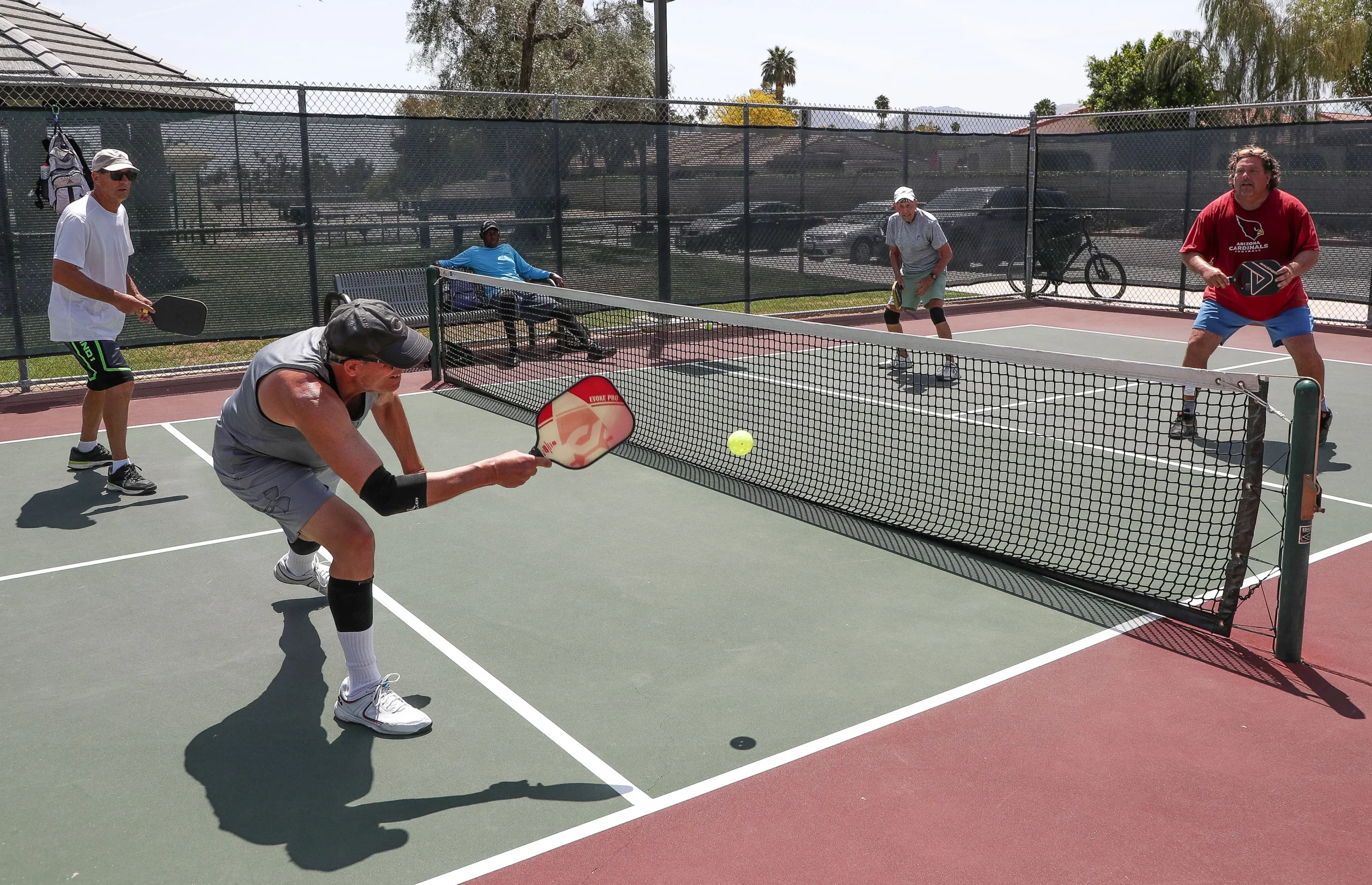
Point Penalty Consequences
The most immediate consequence for committing a fault is the loss of a point. This scenario occurs when a player makes a mistake, allowing the opposing team to capitalize on the error. Point penalties can accumulate quickly, leading to significant shifts in scoring, similar to being dealt a poor hand in poker.
With each fault, players must recognize the cumulative effect these penalties can produce on their overall score. Awareness and focus on technique can help avert many of these common pitfalls.
Warnings and Side-Outs
Players might also receive warnings for persistent faults, which serve as a caution about future behavior. The greater severity of faults can result in a side-out, forcing the offending team to forfeit their serve. This element adds another layer of understanding to fault management; just as a student might be warned about behavior in class before harsher consequences are imposed, players are similarly treated on the court.
Strategically, maintaining composure and adhering to rules allows players to avoid these warnings and potential follow-up penalties.
Game Loss Penalties
In extreme cases of repeated faults or unsportsmanlike conduct, a player may be penalized with the loss of an entire game. This strong consequence parallels how a player might face serious repercussions for misconduct in a competitive league; overstepping boundaries can lead to significant disadvantages.
Consistent discipline and adherence to the rules is essential in preventing game loss penalties, allowing players to maintain their focus and engagement for the duration of play.
Discretion in Enforcement
The enforcement of penalties for faults is mostly left to the discretion of players during recreational matches, while referees handle officiated games. Players must maintain good sportsmanship and be accountable for calling faults on themselves and their opponents. Much like a judge balancing fairness and justice in a courtroom, players need to exercise discretion and respect when managing faults.
It’s essential to foster an environment of mutual respect to uphold the integrity of the game, allowing for enjoyable competition regardless of the setting.
Common Challenges in Calling Faults
Calling faults can be a daunting task, even for experienced players and officials. Common challenges include disagreements over line calls, biased judgments, and difficulty detecting nuanced faults like double hits or foot faults. Just as an athlete must maintain focus while under pressure, so too must players cultivate patience and good communication skills while addressing these potential conflicts.
As players navigate these challenges, it’s crucial to emphasize maintaining a spirit of fair play, encouraging open dialogue and consensus where possible.
Calling and Enforcing Faults
In pickleball, how faults are called and enforced is paramount to fostering a constructive play environment. Players must understand their roles in both officiated and non-officiated games, along with how to navigate common disputes.

Players’ Responsibility in Non-Officiated Games
In non-officiated games, players carry the responsibility to call faults on themselves and their opponents. This element emphasizes accountability within the sport, as players must actively engage in monitoring play and ruling violations. Good sportsmanship plays an essential role, ensuring respect during games even when disputes arise.
As players embody this sense of responsibility, they uphold the integrity of pickleball while fostering humility and respect.
Role of Referees in Officiated Matches
Referees hold a significant role in officiated matches as they are responsible for calling faults, managing penalties, and maintaining overall order on the court. They keep everyone informed of the rules while also having a legislative power to enforce penalties for unsportsmanlike conduct.
Just like an umpire calls strikes and balls in baseball, their authority supports transparency and compliance within competition, allowing players to focus on their performance instead.
Common Disputes and Resolution
Disputes over fault calls often arise during play, and players are encouraged to communicate with respect as they work toward resolution. Disagreement on line calls or other faults should be met with open dialogue, where players can express their perspectives without resorting to hostility.
Imagine the camaraderie developed during a friendly game of cards where players discuss their plays; similarly, maintaining respect helps resolve conflicts effectively.
Encouraging Fair Play and Sportsmanship
Overall, encouraging fair play and sportsmanship is key to enhancing the pickleball experience for everyone involved. Players should prioritize mutual respect, accountability, and adherence to rules as they engage in the game. Just as a pitch-perfect orchestra must harmonize, players working together contribute to the symphony that is pickleball.
Through understanding and valuing the ethos of sportsmanship, players can foster a richer gameplay experience for themselves and their opponents.
Self-Reporting and Accountability
In both officiated and non-officiated games, self-reporting is a vital aspect of playing pickleball. Players are expected to hold themselves accountable for their actions, calling faults when necessary regardless of the potential consequences.
Just as an athlete must acknowledge their own missteps during competition, cultivating a habit of self-reporting reinforces personal integrity and encourages fair play among participants.
Tips for Avoiding Faults
It’s one thing to understand faults, but it’s another to actively avoid them while playing. Implementing strategies to minimize the likelihood of faults can enhance your gameplay experience dramatically. Here are some crucial tips:
Understanding the Rules Thoroughly
Players who take the time to study the rules thoroughly will find they can navigate the game with more confidence. Consider this as laying a foundation before building a house without a solid base, everything becomes unstable. By embedding yourself in the regulations of the game, you can preemptively recognize potential faults as you play.
Practicing Serve Techniques
Well-honed serving techniques are key to avoiding common faults. Engaging in consistent practice will help players develop muscle memory, ensuring they execute serves with accuracy. Routine drills that focus on proper serving form can yield significant improvements. Just as athletes in any sport refine their exaction through repetition, pickleball players should prioritize their service technique in practice.
Awareness of Court Positioning
Maintaining awareness of your position on the court is fundamental in avoiding faults. Players should consistently assess their surroundings and recognize how close they are to the non-volley zone or baseline at any given moment. Success here includes transitioning through the court with intention and purpose, reducing the chances of errors.
Maintaining Focus during Play
Distractions are the enemy when it comes to avoiding faults. To minimize error rates, players must remain mentally focused throughout a match! Incorporating techniques like visualization or meditation can enhance concentration, enabling players to improve their response times.
Engaging in regular practice focusing on mental discipline can transform gameplay, much like an athlete preparing their mind and body for peak performance.
Learning from Mistakes
Mistakes offer valuable lessons. Analyzing faults that incur during play enables players to refine techniques, making positive changes for future games. In the same way that a scientist learns from failed experiments, embracing one’s faults allows for noble growth and progress.
Encouragingly, as players face and learn from their challenges, they can develop not only their skills, but also an appreciation for the process of improvement.
Frequently Asked Questions About Pickleball Faults
As participants aim to understand more about faults, various questions arise frequently. Hence, we delve into the most common inquiries regarding pickleball faults.
What Happens When a Fault is Called?
When a fault is called during a game, the serving team loses their opportunity to score, and the opposing team receives the serve. Much like in tennis, where service errors can quickly shift momentum, faults in pickleball escalate the game’s dynamics, directly impacting scores.
Can You Challenge a Fault Call?
In non-officiated matches, players can discuss fault calls with their opponents, and if there’s any disagreement, they can opt for a replay. On the other hand, if referees are present during officiated matches, their ruling tends to take precedence, but players can still engage in lively discussions about calls.
How Do Faults Affect Scoring?
Faults play an integral role in the pickleball scoring system. They define when the serving side changes, meaning that faults can hinder upward progress like a bird that fails to take flight, they can stall a player’s chance for success. Therefore, avoiding common faults should be a priority to uphold effective scoring during matches.
Are There Different Rules for Recreational Play?
In recreational play, referees are typically absent. So, players assume the responsibility of calling faults and violations. However, in matches with referees present, the officiating body has the final say on any disputes. It’s crucial that all participants remain aware of the rules on the court and the expectations they carry.
How to Educate New Players About Faults?
Educational opportunities abound for new players, emphasizing the importance of understanding rules and avoiding common faults. Regularly playing together, reviewing key points of the gameplay, and practicing proper etiquette will enable newer players to adapt quickly to the world of pickleball. Respecting the learning journey nurtures enthusiasm and creates supportive, interconnected communities.
Conclusion
Mastering the pickleball fault rules is crucial for excelling in the exciting game. By understanding the various types of faults, their implications, and the strategies to avoid them, players can enhance their gameplay, maintain fair play, and contribute to an enjoyable pickleball experience for all. Whether you’re a beginner or an experienced player, staying up-to-date with the latest fault rules and regulations will give you a competitive edge and help you navigate the complexities of this rapidly growing sport. Recognizing and applying these insights will not only elevate your skills but also cultivate a respectful and engaging environment on the court, enriching your pickleball journey.
